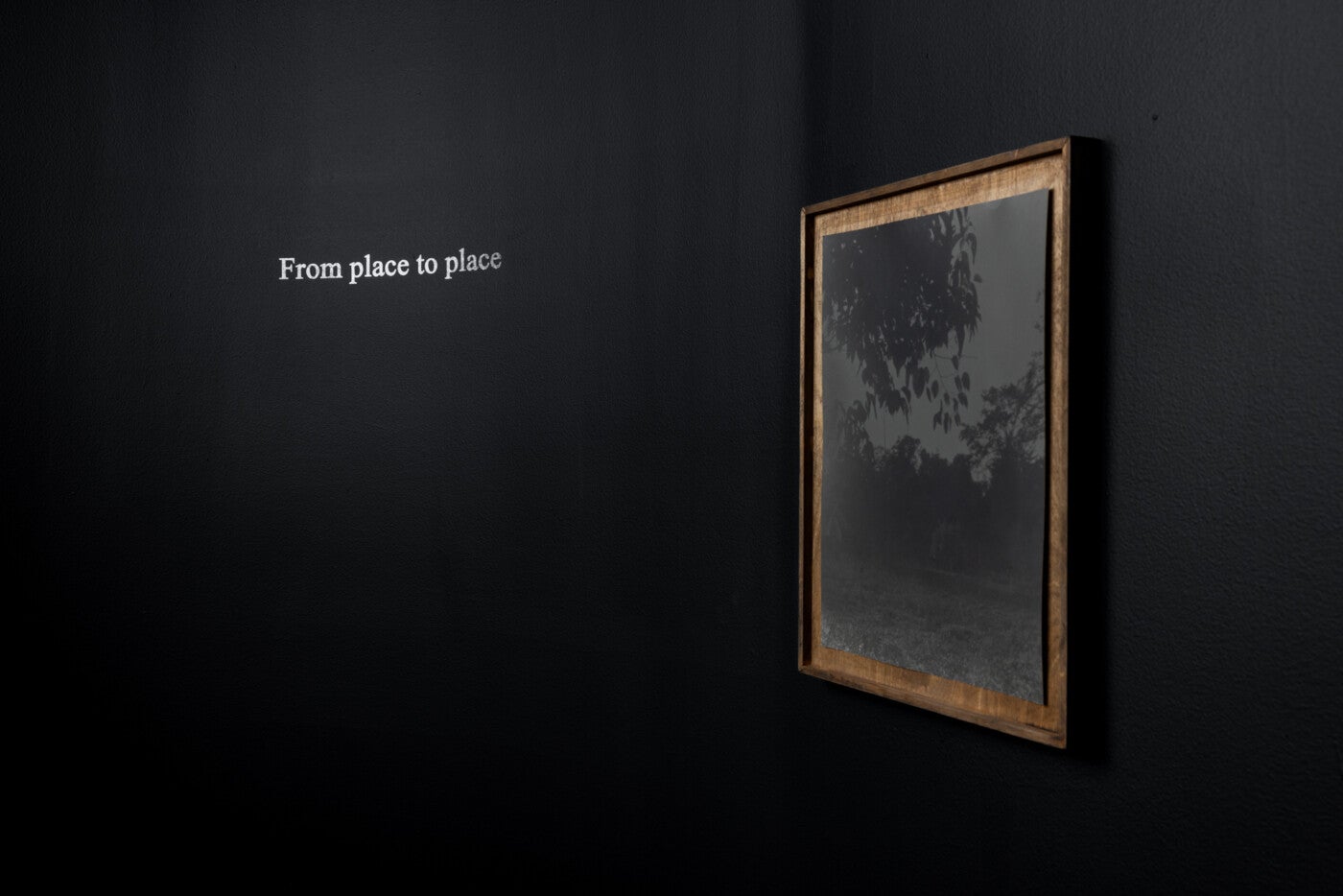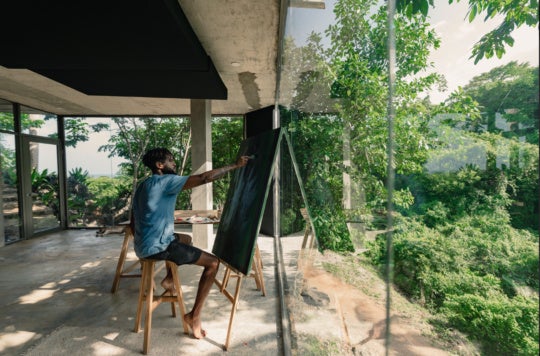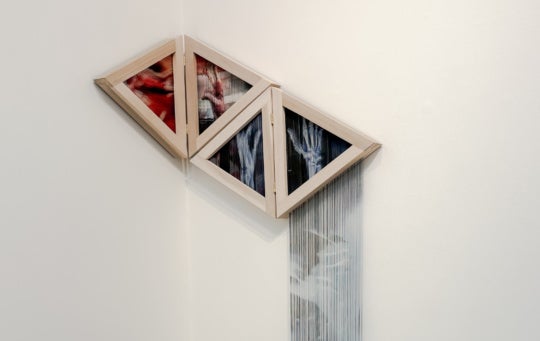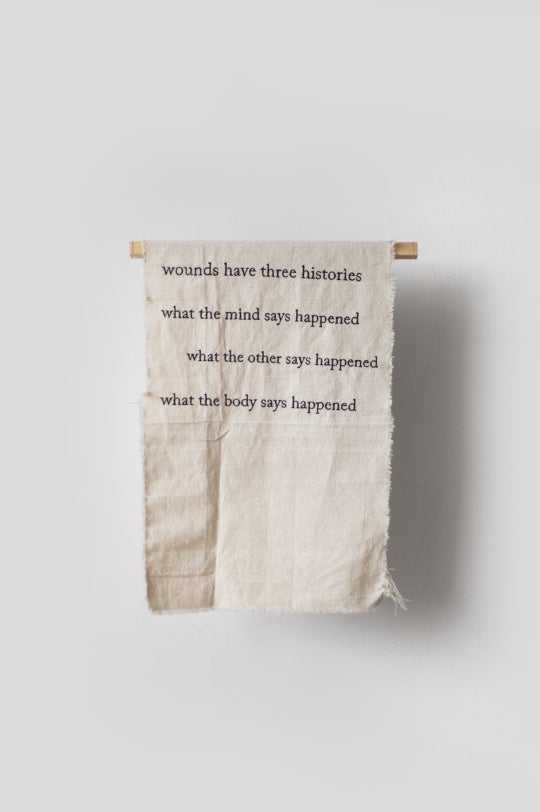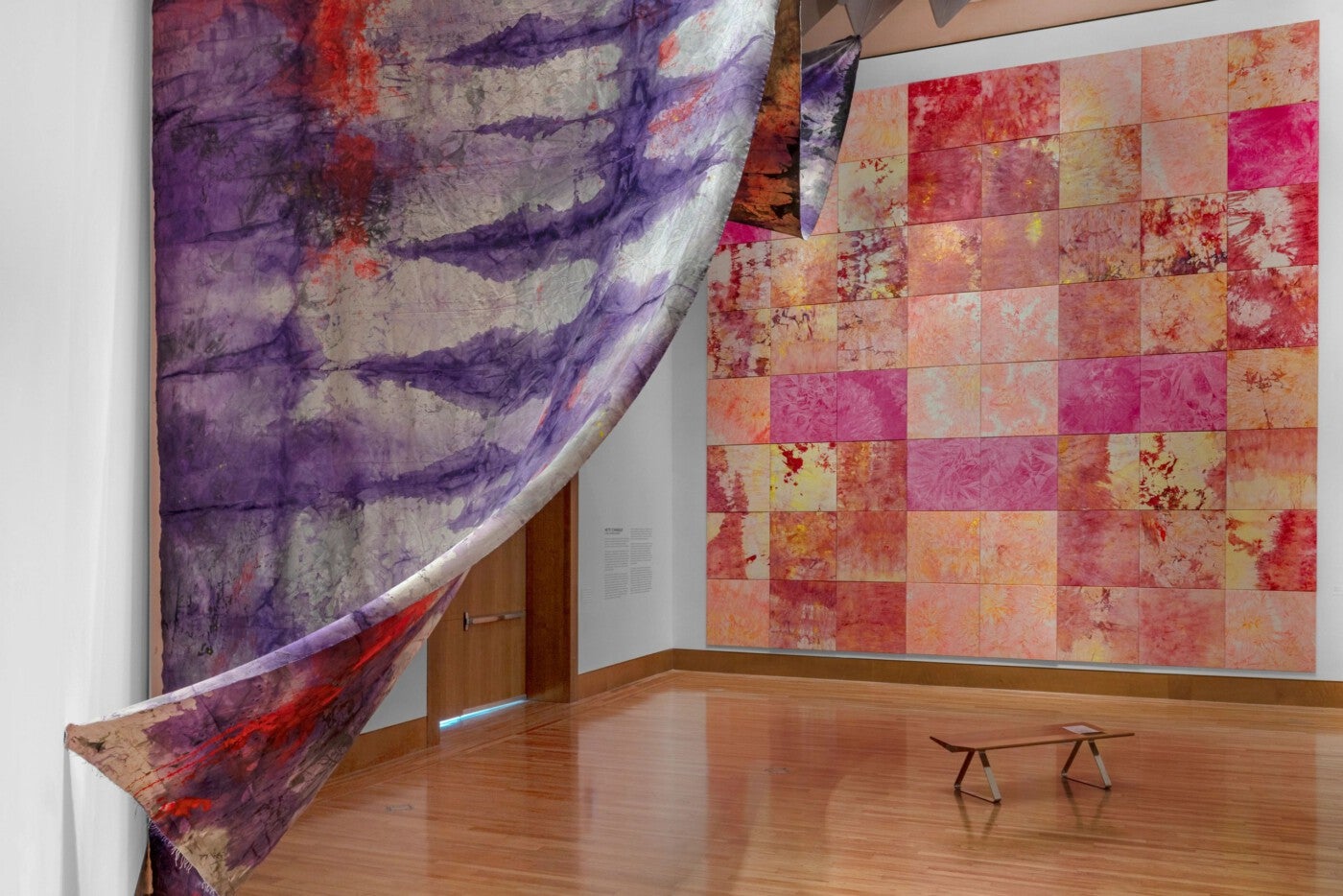
Whatever it is I am saying, I always
Need a leaf or a flower, if not an
Entire field. As for sky, I am wildly
In love with each day’s inventions, cool blue
Or cat gray or full
Of the ships of clouds, I simply can’t
Say whatever it is I am saying without
At least one skyful. That leaves water, a
Creek or a well, river or ocean, it has to be
There. For the heart to be there. For the pen
To be poised. For the idea to come.
“Of What Surrounds Me”[1992] by Mary Oliver
It is with the late Mary Oliver that I conduct the act of bibliomancy with friends. Communally, a question is asked that answers are sought. A book of her poetry is opened to a random page as index fingers guide those looking for a response. The answers to these questions invite resonance, somber acceptance, and laughter from each of those who partake. Bibliomancy uses books and the randomly chosen passages within them to guide, to foretell, to inspire.
Titularly named from an Oliver poem, Of what surrounds me at The Patricia and Phillip Frost Art Museum is an exercise in visual ekphrasis. Many of the works on view by Amanda Bradley, Cristina Lei Rodriguez, and Mette Tommerup were commissioned for the exhibition. The Miami-based artists featured each distill nature in their respective practices, beginning from the physical world and concluding with original composites that render the natural as seen through the eyes of its beholders.
Of the ships of clouds, I simply can’t
Say whatever it is I am saying without
At least one skyful.
Tacked in tile formations onto a wall or draping from the ceiling to the floor, Mette Tommerup’s acrylic on raw canvases remind me of how small I truly am—a feeling that emerges often when I sense the magnitude of natural phenomena. The paintings, named after a stanza from one of Oliver’s poems, spell out an original poem by the artist when their titles are placed together—“How to stroll through the fields / Like the body of a flower / Which she adores / Don’t you think that deserves a little thought?”—the tessellation of How to Stroll Through the Fields (2024) specifically creates a gradient cento. The hodgepodge of excerpts meshed together in unlikely labeled unison are aligned with the warm color pairings of the reds, pinks, oranges, and golds. Working entirely outside, Tommerup’s unscripted movements on the canvases are guided by light as it progresses across a day’s run of show, especially in the hues of this grid.
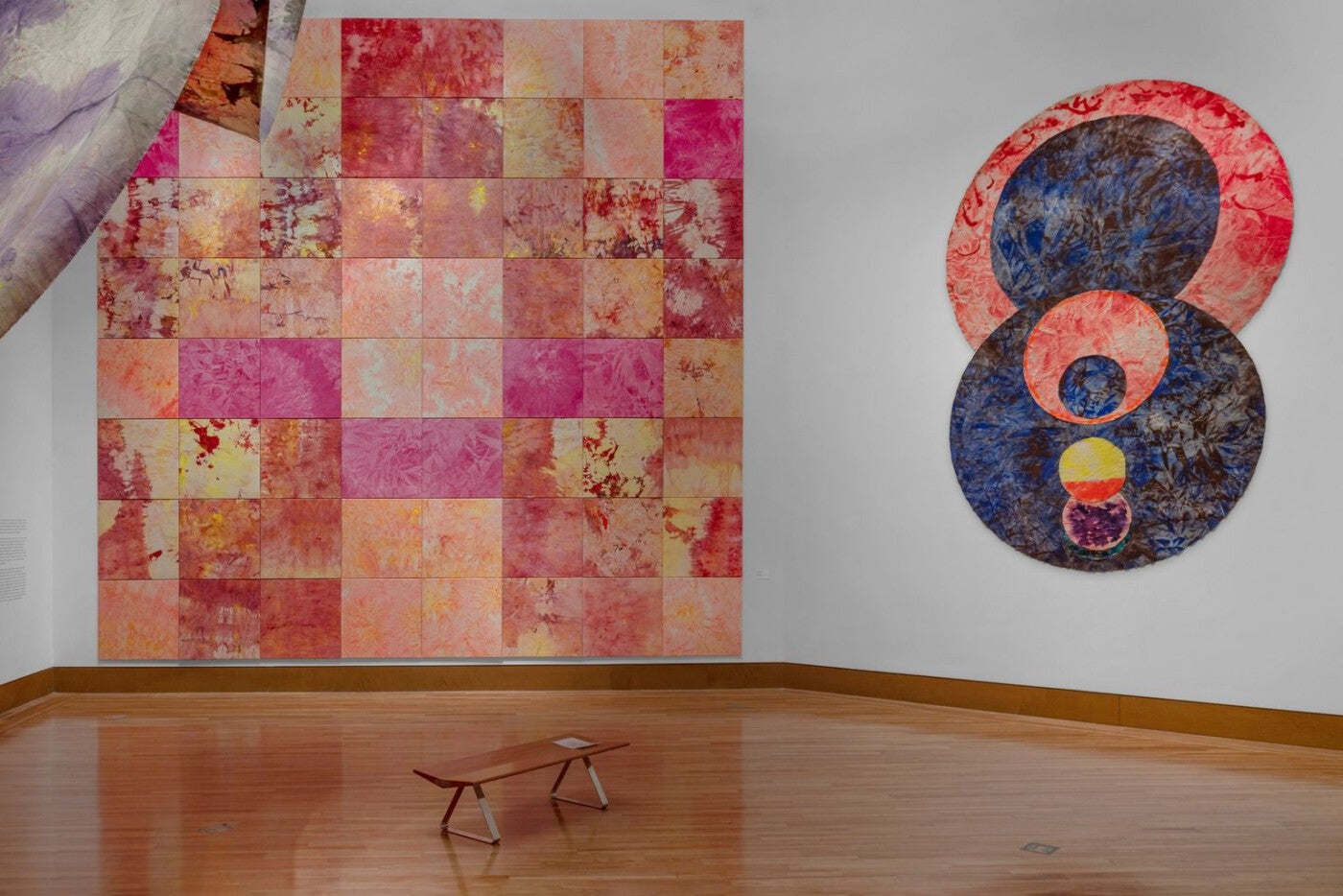
Hand-dyed by the artist, the works in their finished state appear rippled and pooled, areas where the dye’s pigment is darker congregate together in spillage against a more delicate background. Other compositional facets show the impression of the creases that result from the rich saturation of color and the impact of incorporating materials into the crumpling, twisting, pleating, and smoothing of the raw canvases. There’s also the limitations and multifaceted options for how a canvas is presented, from hung loosely to cut into circles to stretched tightly across stretchers and organized in a modular pattern. I think of tie dye as I view the squares, the happy accidents that come with mark-making, and the sanctity of making art on terra that bears art’s makers.
Whatever it is I am saying, I always
Need a leaf or a flower, if not an
Entire field.
Turning the corner of the introductory section, Cristina Lei Rodriguez’s showcase is a sensory remix of topographies created from imitation and freshwater pearls, epoxy, micro crystals, grout, plastic, and lapis lazuli stone. I recoil at the artifice as the moody elegance of Dusk (Recorded July 17, 2022 at 8:10pm) (2024) is wallpapered two-dimensionally, standing like a pillar over the artist’s encrusted compositions. What appears to be hand-painted phalaenopsis and spider orchids are in fact scans of the live exotic species resting on top of the machine with the depth of the night sky in the foreground. To look at the micro at macro scale is a jaunting illusion, tricks that the artist plays on viewers throughout her sculptures.
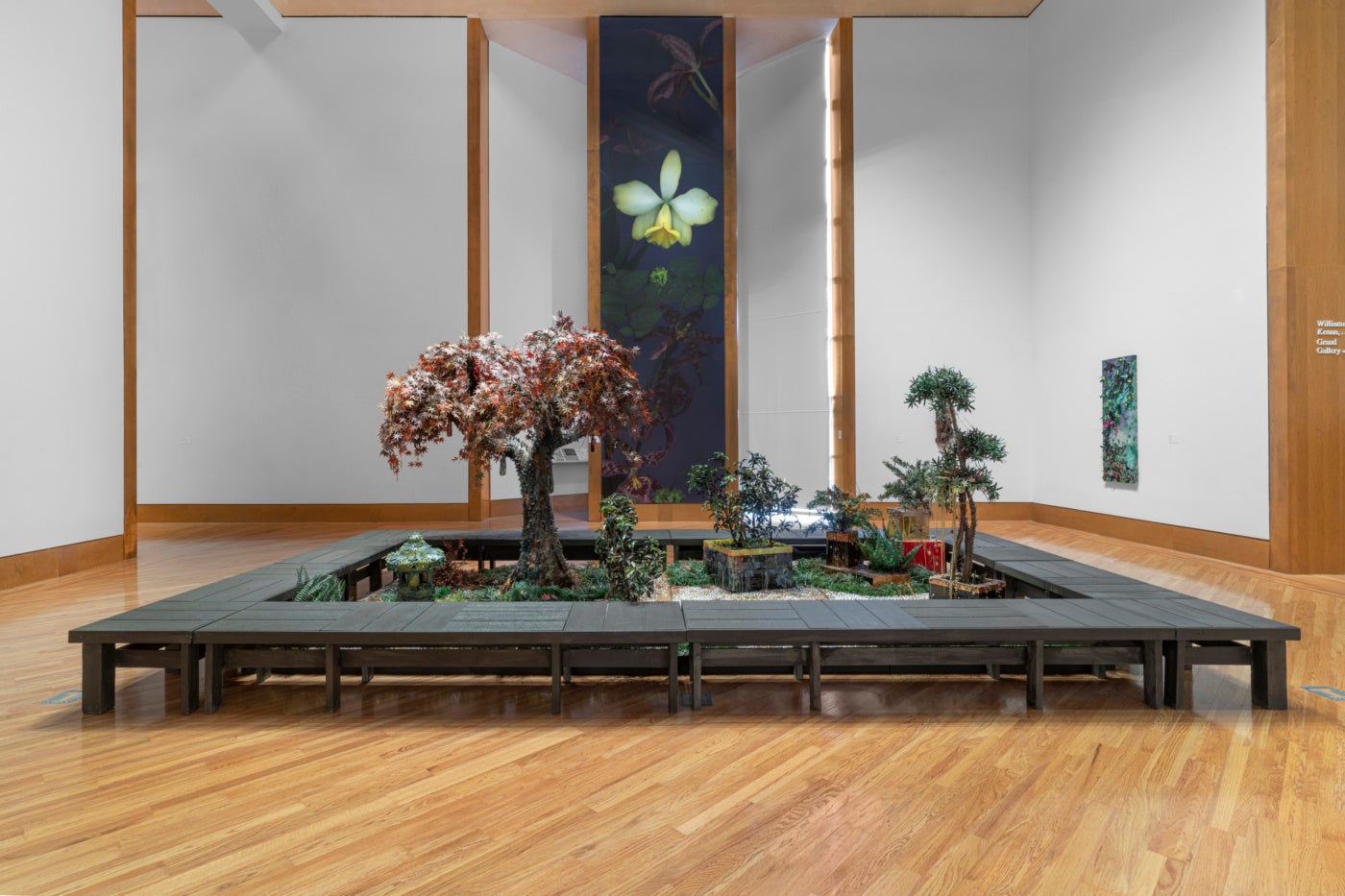
The teenaged return of Endless Autumn (2006) to the public eye, where it was first presented eighteen years prior in 2006 at Perrotin Gallery in Miami, is a controlled mimicry of a Japanese garden. Completely fashioned from artificial resources, Rodriguez considers how these manufactured embellishments present a prettier reality than how time truly operates. There’s an eeriness and lifelessness in these works that intend to imitate life, as the sheen of surfaces are all made with epoxy and resin, rather than the dew of the earth. Plastic has not faded over the years, fake materials resist the ugliness of decay, and things are not what they seem when altered by human touch.
That leaves water, a
Creek or a well, river or ocean, it has to be
There. For the heart to be there. For the pen
To be poised.
A blown up black and white blurred photograph reveals fragmented phrases written by the artist; Amanda Bradley’s textual manipulation of images is steeped in the invisibility of the visible. “The heat, / And vast hues of green / Overgrown land set free / It shows me there’s still so much more to see” float to the surface as I traverse past the wall and look back at this still motion in time. Sectioned off in two series, the external periphery of the bordering gallery walls present an individual set of unframed archival fine art prints that are titled and debossed with an original palindrome by Bradley. Deconstructed across the twelve snapshots of Miami, Belize, and the Caribbean, the poetic sequence reads the same forwards and backwards like the memory journey of these captures; it is non-linear; the perspective of looking out of a kitchen window is bookended by banana plants and clouds floating above a mountainscape.
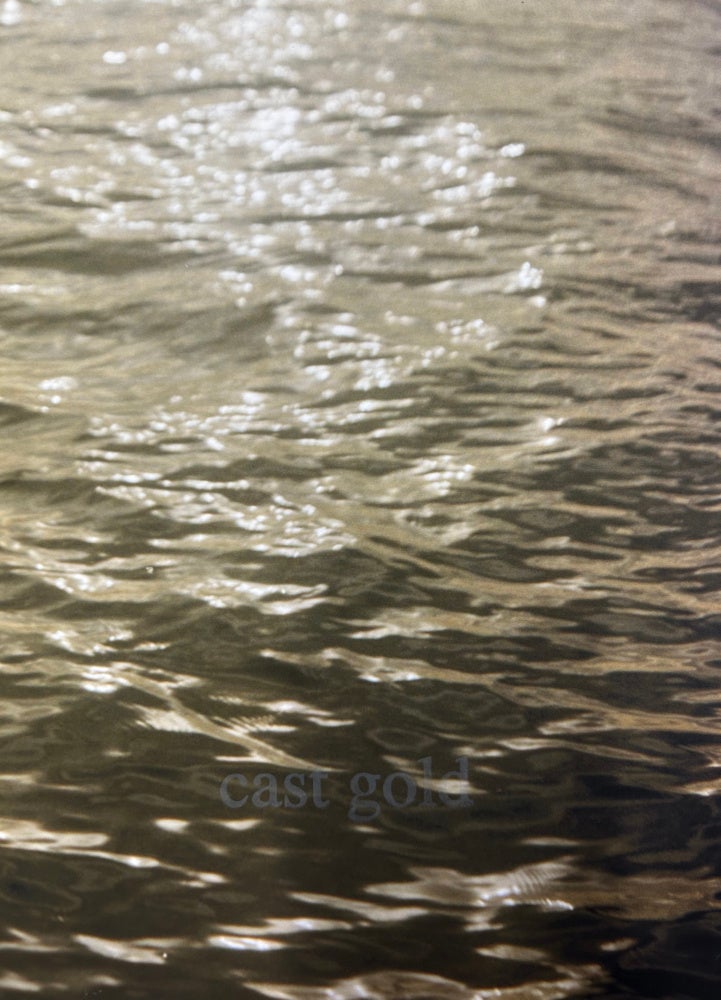
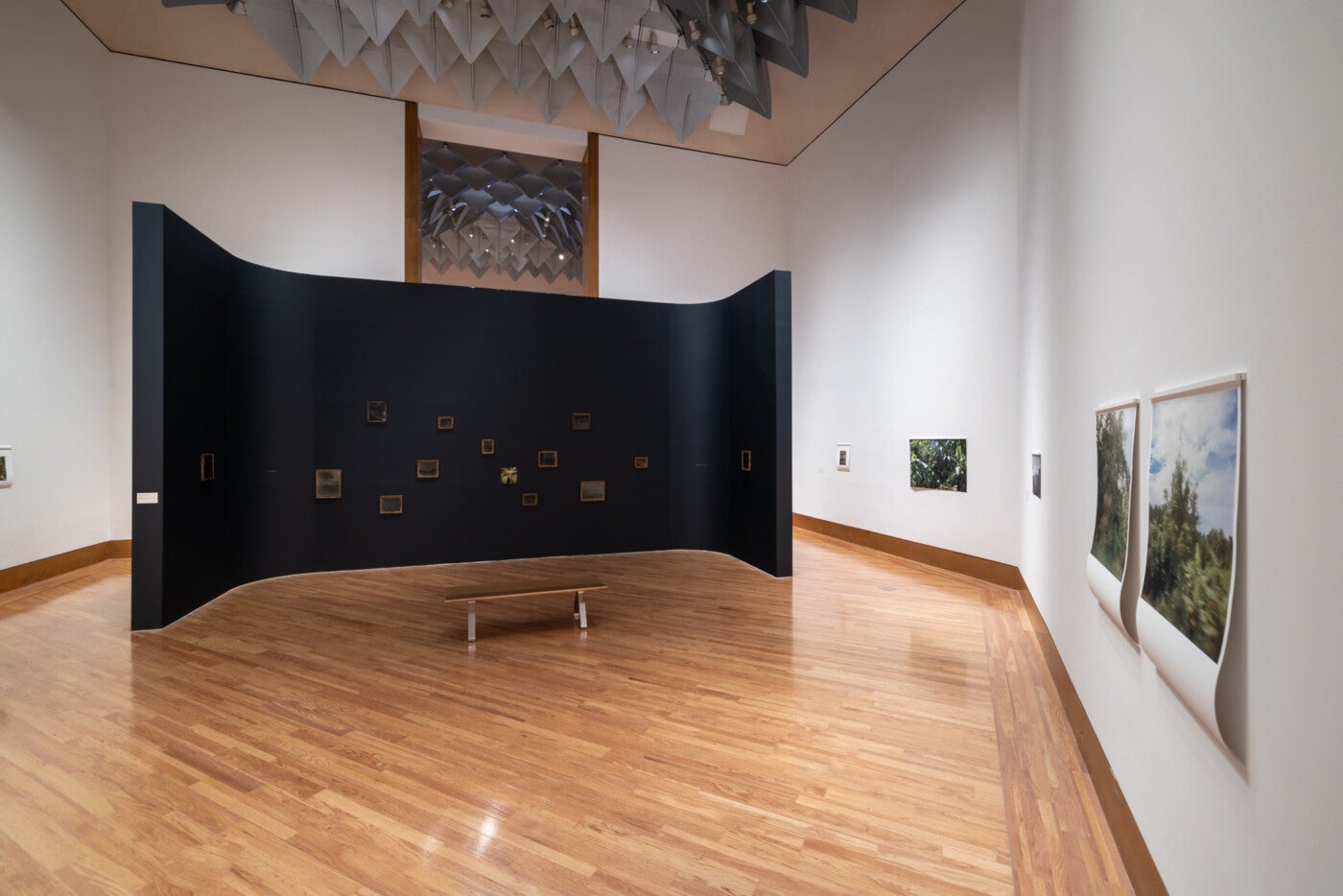
In the center of the space and behind the initial wall barrier is another grouping of works titled Notations of home (from the series La luz recuerda), (2024) a constellation hanging of solarized silver gelatin prints that jog my lens-based brain into thinking of monochrome film negatives. The alternative photographic technique of solarization floods the development process as an image emerges, removed of white and grayed with exposure. Tethered across a black wall like stars in the nighttime, the series is a reminder of how home is found across distant lands, of the visual vignettes that are wayfinding guides for personal senses of belonging.
For the idea to come.
Oliver’s writing is a springboard to guide, to foretell, to inspire Bradley, Rodriguez, and Tommerup as they summon their own understandings of creation through these presentations. While this world is singular, no two experiences are the same. Beyond the psyche of these artists’ minds, there’s an entire planet to be experienced that often gets taken for granted by individual and collective worries. Like Oliver, the three artists surround themselves in the overwhelming intensity of living, permitting Mother Nature to permeate their lives and creativity, resulting in vastly different ways of expressing oneself.
Nature is a retreat from the chaos, a chaos in itself, a chance to begin anew or recycle old habits into fresh paths of personal processing. The trajectory of this trio is solitary but in solidarity with one another. The exhibition space itself holds capacity for the immensity of these three installations, their segmented sections reversed in order of dimensional scale, larger-than-life to lifelike to close-up. From start to finish, my gaze and body go from looking high above to looking face to face at hidden details; it is parallel to witnessing nature itself.
